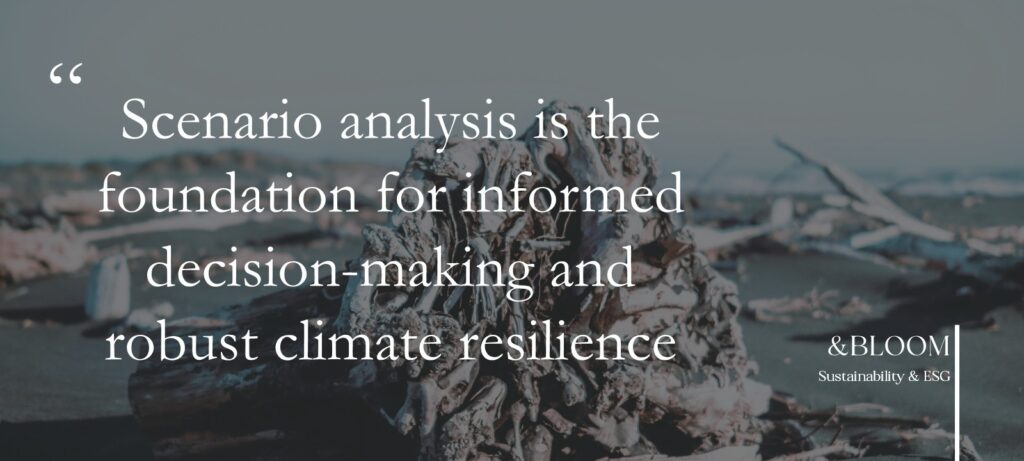Mastering Climate Scenario Analysis Under ASRS: A Practical Guide to Building Climate Resilience
Business Services, Guide, Social & Environmental Services
Business Services, Guide, Social & Environmental Services
This article was contributed by &BLOOM Sustainability & ESG.
As the Australian Sustainability Reporting Standards (ASRS) come into effect, climate scenario analysis has become a vital requirement for businesses. But beyond compliance, it offers a unique opportunity to assess your organisation’s climate resilience and turn potential risks into strategic advantages.
You can check out the first article about the ASRS here.
Climate resilience, as defined by ASRS, is an organisation’s capacity to anticipate, prepare for, and adapt to climate-related risks and opportunities. It’s about how ready your business is to respond to a range of possible climate futures.
Scenario analysis is the tool that makes this possible. It involves exploring different plausible climate scenarios — such as a world where global temperatures rise by 1.5°C or one where warming exceeds 2°C — and assessing their potential impacts on your business strategy, operations, and financial health.
This process helps identify not only the physical risks like extreme weather or sea level rise, but also transition risks, including policy shifts, technology changes, and evolving market preferences.

There are three crucial reasons to embrace climate scenario analysis:
Through this lens, scenario analysis becomes the foundation for informed decision-making and robust climate resilience.
ASRS requires businesses to disclose how they conducted scenario analysis, including:
Importantly, ASRS mandates analysing at least two contrasting scenarios: one aligned with limiting warming to 1.5°C and another representing a higher warming trajectory (exceeding 2°C).
Organisations often rely on well-established frameworks such as those from the International Energy Agency (IEA) and the Intergovernmental Panel on Climate Change (IPCC). These provide scientifically grounded, plausible, and relevant scenarios that meet ASRS standards.

To conduct a meaningful scenario analysis, businesses should follow a structured process:
While initial analyses can be qualitative, organisations should progressively incorporate quantitative data to enhance precision and decision-making confidence.
Numerous open-source and commercial tools can facilitate scenario analysis. Platforms like Aqueduct, WWF’s climate scenario datasets, and Climate Analytics offer valuable climate projections aligned with IPCC pathways.
These tools provide transparent methodologies and standardized data to support the inputs and assumptions critical to ASRS disclosures.

Scenario analysis under ASRS is more than a compliance exercise — it is a strategic lens that helps organisations understand their vulnerabilities and opportunities in a climate-affected world. By embedding this process into governance and planning, businesses can enhance resilience, attract investment, and secure long-term value.
At &BLOOM, we specialise in helping organisations navigate this complex landscape, turning ASRS requirements into practical, actionable strategies that build climate resilience and competitive advantage.
This is an article from a SustainabilityTracker.com Member. The views and opinions we express here don’t necessarily reflect our organisation.